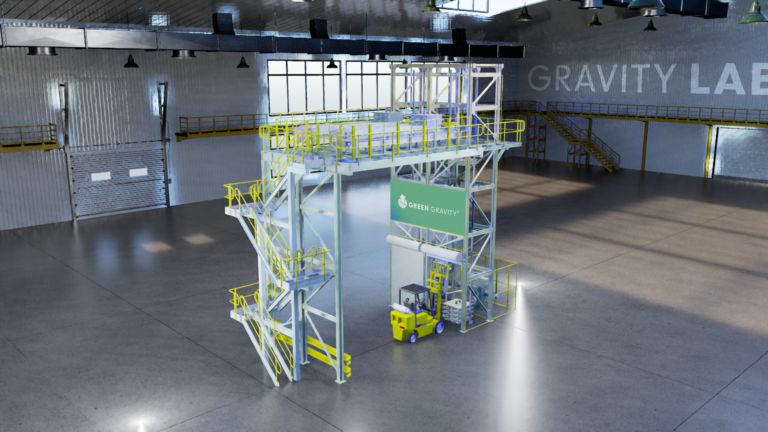From pv magazine Australia
Green Gravity and Western Australia-headquartered mining contractor RUC have executed a Memorandum of Understanding which will see the parties collaborate on the technical opportunities, data insights and commercial arrangements associated with gravitational energy storage systems.
Green Gravity, based at Wollongong on the New South Wales South Coast, aims to use gravity to generate clean, dispatchable energy. Its technology relies on lifting and lowering ultra-heavy weights in legacy mine shafts and in doing so, turning a turbine that creates electricity – essentially providing an alternative to pumped hydro or batteries without the need for water or chemicals.
Green Gravity founder and Chief Executive Officer Mark Swinnerton said the company’s energy storage technology “represents a breakthrough in the search for economic long-duration storage of renewable energy.”
“Green Gravity is bringing new technology to an existing population of mineshafts,” he said. “By re-using mining assets, costs can be kept low. By using gravity as the fuel, we dispense with consuming the critical water, land, and chemicals which other storage technologies rely on.”
Swinnerton said the partnership with RUC brings together the mining contractor’s capability in shaft sinking and mineshaft hoisting operations with Green Gravity’s technology, a combination which he believes “has the potential to significantly accelerate and to improve the deployment of gravitational energy storage systems into mineshafts.”
“With detailed design underway for our commercial-scale energy storage system, integrating the global scale and innovative thinking of RUC to areas like the vertical transit system and mine winder design will generate superior outcomes for the technology,” he said.
The signing of the MoU follows Green Gravity’s recent announcement that it would partner with BlueScope to build a 12-metre-tall prototype at the steel manufacturer’s Port Kembla Steelworks. The research and development facility will also include a digital twin that can be used to test new components or hypothesis before they are trialled in the physical world.
“The … lab will enable power generation capacity and efficiency to be validated in addition to data that will support Green Gravity technology to connect to the power grid at large-scale,” Swinnerton said. “This allows us to have great confidence in the mine site and convince the mining operators to say, ‘It’s working over here’, and that’s a way of building confidence.”
This content is protected by copyright and may not be reused. If you want to cooperate with us and would like to reuse some of our content, please contact: editors@pv-magazine.com.









By submitting this form you agree to pv magazine using your data for the purposes of publishing your comment.
Your personal data will only be disclosed or otherwise transmitted to third parties for the purposes of spam filtering or if this is necessary for technical maintenance of the website. Any other transfer to third parties will not take place unless this is justified on the basis of applicable data protection regulations or if pv magazine is legally obliged to do so.
You may revoke this consent at any time with effect for the future, in which case your personal data will be deleted immediately. Otherwise, your data will be deleted if pv magazine has processed your request or the purpose of data storage is fulfilled.
Further information on data privacy can be found in our Data Protection Policy.